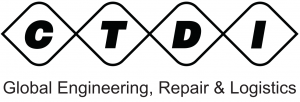100 years of aviation innovation: The Honeywell Aerospace story
21.08.2014Company: Honeywell, spol. s r.o.
Today’s passenger jets utilize composite material, are highly fuel-efficient, generate up to half a terabyte of data every flight, and use a combination of advanced cockpit technology, soft LED lighting, lower pressurization and higher humidity levels to keep you safe and comfortable.
By: James Bryson, President of Honeywell Aerospace – EMEAI
Roll back 100 years to 1 January 1914, when the world’s first passenger flight took place between St. Petersburg and Tampa in Florida, US. The one paying passenger completed the 21-mile journey in 23 minutes; at cruise speed, a modern passenger jet can cover around 270 miles in the same time.
That same year, a single piece of technology was introduced that would shape the way we fly today, and mark a pivotal moment for one of the industry’s most important and innovative companies in the process. That technology was Lawrence Sperry’s gyroscopic stabilizer — the world’s first autopilot. The company is Honeywell Aerospace.
1914: The Honeywell story begins
On 18 June 1914, Sperry and his assistant demonstrated the capabilities of his new invention to a large crowd that had gathered on the banks of the River Seine. The men flew down the river while standing on the wings of Sperry’s Curtiss C2 bi-plane, with only the autopilot at the controls. Sperry’s autopilot research would eventually provide the basis for today’s advanced navigation systems. And his company, which later became a part of Honeywell, has played a leading role in aerospace innovation ever since.
Enablement of mass-market, long-haul travel
Sperry Aerospace isn’t the only legacy Honeywell company to have helped shape the way we fly today. In the 1930s, Garrett AiResearch’s founder Cliff Garrett played a leading role in pressurizing military aircraft cabins during long-haul flight -- research that has become the foundation for cabin pressurization on all modern aircraft flying today.
And a few decades later, Bendix Radio (now part of Honeywell’s BendixKing brand) created the world’s first practical en-route weather radar – the RDR-1. This milestone in avionics would ultimately become the beginning of a product line that Honeywell continues today with the RDR-4000 IntuVue 3D Weather Radar.
In 1963, Honeywell installed the Garrett 85 Series auxiliary power unit (APU) on the Boeing 727. The introduction of the APU on the airplane meant that crews no longer had to rely on ground power while at the airport, enabling airlines to expand their networks to include previously inaccessible destinations. Together these milestone technologies opened the door for mass market long haul air travel.
Tackling the problem of aviation safety
While these advancements in technology were being refined to long haul flights to the masses, Honeywell’s Don Bateman was busy creating a technology that arguably has done more to keep passengers on these flights safe than any other safety technology has in the history of flight. In 1974, the FAA mandated his Ground Proximity Warning System (GPWS) to minimize Controlled Flight into Terrain (CFIT) accidents. By 1980, the installation of GPWS had contributed to a tenfold decrease in the rate of CFIT accidents among US carriers alone.
Bateman and his team went on to pioneer the Enhanced Ground Proximity Warning System (EGPWS) in 1996, which features GPS positioning and an ever-growing terrain and obstacle database to help pilots understand the terrain around their aircraft. In 2003, Honeywell introduced the world’s first Runway Awareness and Advisory System (RAAS), which uses the EGPWS database to provide alerts to pilots to help guide them to the correct runway. Today nearly 2,500 in-service aircraft use Honeywell RAAS-based safety systems.
Staying connected at 40,000 feet
As well as safety and efficiency improvements over the past century, we should also remember how far passenger comfort has evolved in this time. In 2012, Honeywell signed an exclusive agreement with Inmarsat to provide the hardware for its new GX Aviation satellite connectivity service. When GX Aviation enters service in 2015, it will be the first system to provide passengers and the cockpit with seamless, high-speed in-flight Wi-Fi connectivity virtually anywhere in the world.
Looking ahead to the next century of flight
When you look at how far we have come over the past 100 years, the modern jetliner is a quantum leap from Mr. Sperry’s Curtiss C2. Yet the aviation industry still has challenges including operational costs and, increasingly, capacity issues to overcome. Only through the development and market introduction of aircraft technologies that lower costs and enable aircraft to fly more efficiently does the challenge of sustaining and supporting passenger growth become surmountable. Here at Honeywell we look forward to playing our part in this evolution of flight in the years to come.







